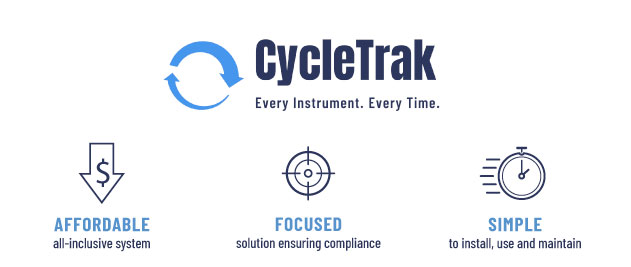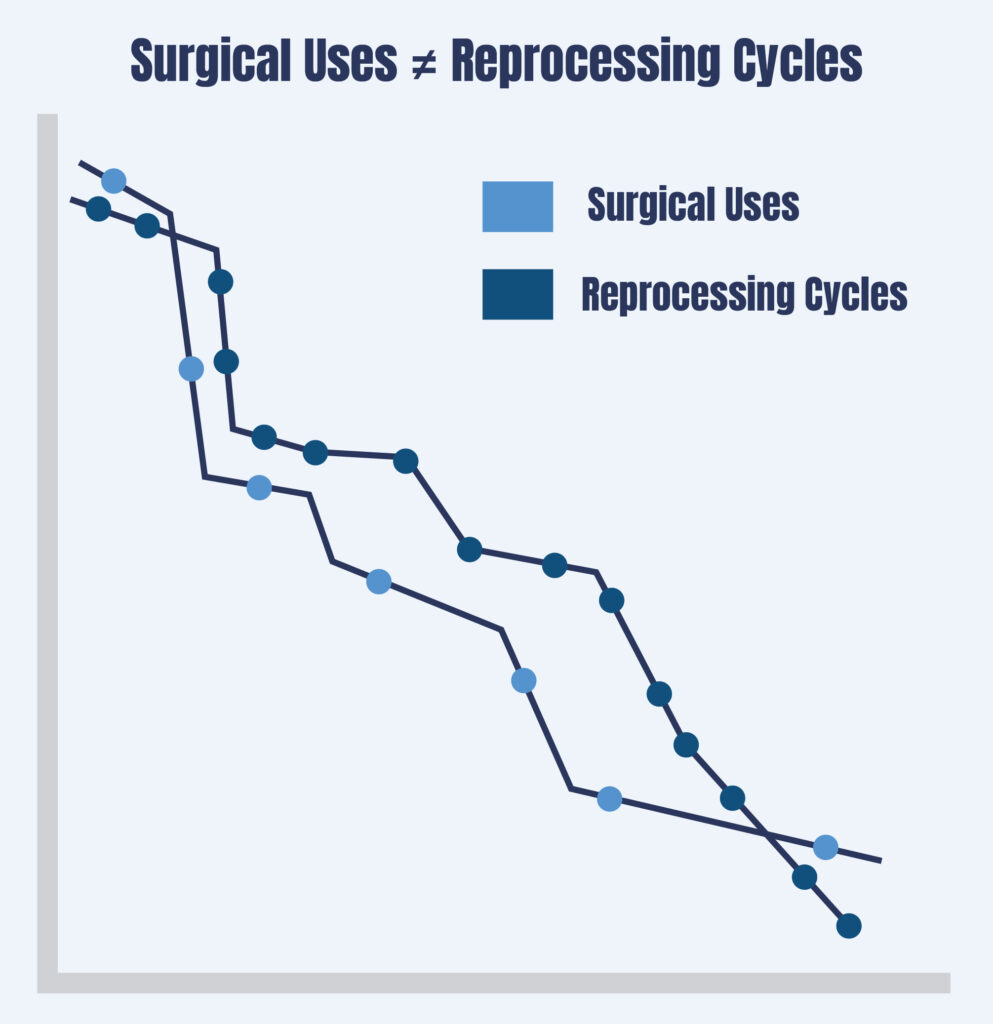10 May da Vinci Peel-Packing Assumptions that Could Put You at Risk

If you are a hospital that performs robotic surgery with Intuitive Surgical’s da Vinci Xi, Si, or Sp robots, you know that their instruments don’t last forever. In their IFUs, Intuitive Surgical has specified a maximum for both surgical-uses (surgical procedures performed) and reprocessing cycles allowed for each da Vinci instrument. To meet the IFU standards, you are required to have a method to determine when your da Vinci instruments have reached their specified limit for both surgical-uses and reprocessing cycles so you know when to remove them from service. Removing “expired” instruments from service is important for both patient safety and IFU-compliance.
Luckily, the da Vinci system provides you with a built-in method to track the surgical-uses. When an instrument is attached to the robot, the system indicates when it reaches the maximum number of surgical-uses. Additionally, each instrument has an internal mechanism that provides you with a visual indicator when the surgical-use maximum has been reached. But, how do you track reprocessing cycles so that your instruments remain compliant with the IFU?
A common approach to tracking the reprocessing cycles involves “peel packing” all da Vinci instruments — an easy but risky solution. This method calls for placing a single da Vinci instrument into a peel pouch before the sterilization process.
This approach has two large risks: 1) cautery cord surgical-uses and reprocessing cycles could exceed the specified number of uses due to lack of tracking within the da Vinci system, and 2) all da Vinci instruments could exceed the maximum reprocessing cycles because surgical-uses can quickly and easily become misaligned with the true number of reprocessing cycles for a da Vinci instrument.

Let’s dig-in a little deeper.
The assumptions and reasoning behind the “peel packing” approach are:
- Surgical-uses and reprocessing cycles will always be equal because we won’t open a pouch unless we use the instrument in a da Vinci procedure; therefore, surgical-uses are a valid proxy for reprocessing cycles;
- When the instrument is used in a da Vinci procedure the robot will track the surgical-uses;
- The da Vinci system will tell us when the instrument has reached its surgical-use maximum; and the instrument has a visual indicator (“remove from service” alert);
- We know that the maximum for reprocessing cycles for a specific instrument is always greater than the maximum surgical-uses.
If all of these assumptions were always true, a da Vinci instrument could never exceed the reprocessing cycle maximum but, there are a couple of the assumptions that are not always true. Let’s look at them one by one.
We’ll take a look at the easy ones first. Assumption #4 is (currently) true. As of this publish date for this blog, all of the da Vinci instruments have maximum reprocessing cycles that exceed their maximum surgical-uses. Additionally, assumption #3 is (currently) true — the da Vinci system provides an alert and the instrument provides a visual indicator when the instrument has reached its maximum surgical-uses.
From here things get a little “dicey.” Assumption #2 is true most of the time. The da Vinci system tracks surgical-uses for most of the da Vinci instruments but doesn’t track cautery cords. Cautery cords have specified surgical-uses and reprocessing cycles but, because the robot doesn’t track surgical-uses on these instruments, Because it doesn’t track them, you don’t get the “remove from service” alerts when this threshold has been reached. So, the question becomes, how do you know when to remove cautery cords from service for exceeding surgical-use or reprocessing cycle thresholds? Do you continue to use the cords until they fail and then replace them?
Assumption #1 is the most problematic. The goal of the “peel pack” approach is to install a process that ensures that surgical-uses and reprocessing cycles are always equal. This “always equal” assumption is required to allow surgical-uses to be used as an indirect tracker or proxy of reprocessing cycles. But, the underlying premise of the method is “we only reprocess a da Vinci instrument when it has been used in a procedure (a surgical-use).” That premise contradicts the reality of daily operations in an O.R. or a Sterile Processing department. Sometimes an instrument peel pouch gets opened in the O.R. but the instrument isn’t used in the procedure; this requires a reprocessing cycle without a corresponding surgical-use. Sometimes an instrument pouch gets torn or otherwise compromised; both require reprocessing cycles without corresponding surgical-uses. As a result, surgical-uses cannot be considered a valid proxy for reprocessing cycles because they are not always equal. Therefore, using surgical-uses to avoid exceeding reprocessing cycle limits, and stay in compliance with the IFU, is a risky proposition.
In conclusion, while “peel packing” your da Vinci instruments in an effort to not exceed the IFU limit for reprocessing cycles is certainly better than “doing nothing,” the question becomes this: is it truly good enough?
Author: CycleTrak
